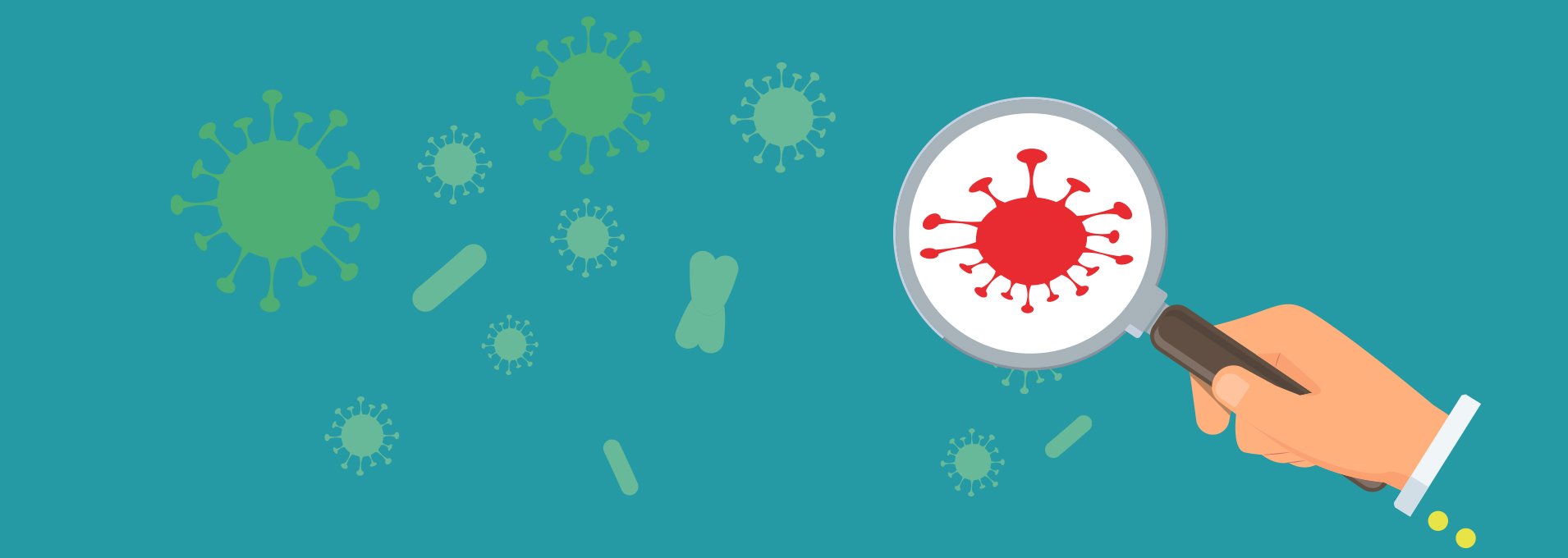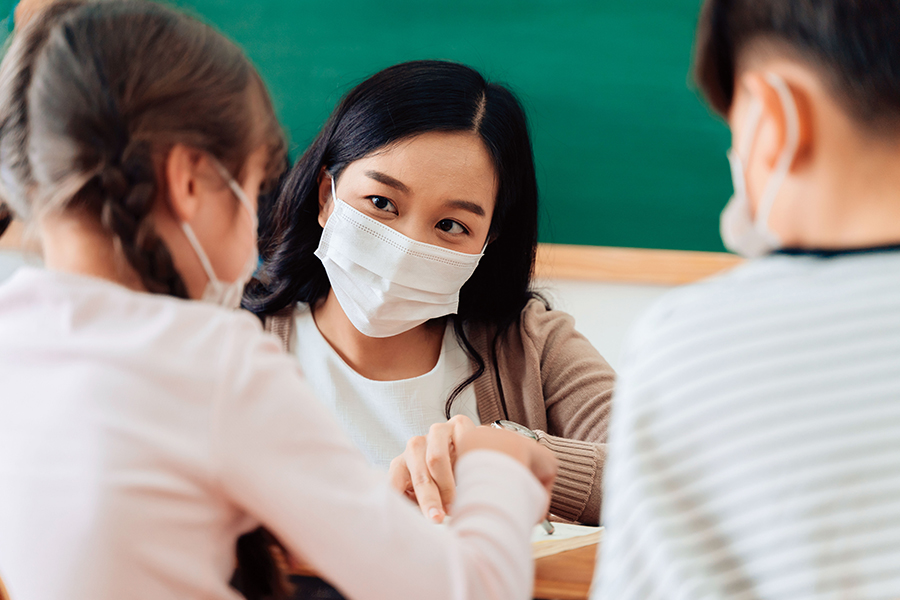본문영역

- CULTURE FOR YOU
- Getting to Know More about
Novel Infectious Diseases of the 21st Century
-
Increased number of confirmed patients
with severe illness
following the step-by-step
recovery to normal life:
The most effective vaccine against
COVID-19 is a mask Written_
LEE Jeong-ah, DongaScience reporter
Written_
LEE Jeong-ah, DongaScience reporter
-
The number of new COVID-19 confirmed patients increased as Korea implemented the step-by-step recovery to normal life beginning November 1.
Along with the growing number of confirmed cases, the number of patients with severe cases and deaths also increased.
Experts recommend vaccination even for those infected with COVID-19 to reduce the risk of turning into a severe case and emphasized that the most important preventive measure is wearing a mask indoors.
As the global pandemic of COVID-19 has prolonged for nearly two years, some countries adopted the “Coexisting with the Coronavirus” scheme to recover to normal step-by-step. European countries, including the UK, France, Germany, and Denmark, and Singapore and Israel have been implementing this scheme for several months. Although the situation differs from country to country, they generally introduced a “vaccine pass” and eased quarantine measures for those who have been vaccinated.
Korea also began the step-by-step recovery beginning on November 1. The decision was made after judging that strong quarantine measures led to heavy social, educational, and economic losses. Accordingly, restrictions on business hours of multi-purpose facilities, such as restaurants and coffee shops, were lifted, and the number of people allowed for private gatherings was significantly increased.
The step-by-step recovery scheme was adopted according to the COVID-19 vaccination rate exceeding 70% of the total population. According to clinical study results, the COVID-19 vaccine does not prevent infection 100% but can prevent the risk of severe aggravation and death by more than 90%. In Korea, the fatality rate of COVID-19 remained low at 0.78% as of November.
The problem is that even when the fatality rate is low, the number of severe cases and deaths will increase accordingly if the number of confirmed cases grows. In fact, the number of confirmed cases in Korea in November exceeded 2,000 a day, and the number of severe cases and deaths was in double digits. The quarantine authorities and doctors agreed that they could not rely only on high vaccination rates, so people should follow personal hygiene measures, such as wearing a mask and washing hands regularly, even if a step-by-step recovery is implemented.
Increasing face-to-face contacts with the “Coexisting with the Coronavirus” scheme:The importance of wearing a mask indoors
Why did the COVID-19 outbreak not subside but increase even though 7 to 8 out of 10 people have been vaccinated? Experts pointed out the main reasons as the gradual decline in vaccine effectiveness over time and the prevalence of the Delta variant of COVID-19, which is more contagious than the existing virus. Moreover, as the quarantine measures were eased with the government’s “Coexisting with the Coronavirus” scheme, the public’s tension about COVID-19 eased, and face-to-face contacts increased.
This is why wearing a mask indoors is so important. The coronavirus is spread through droplets from coughing, sneezing, or runny nose by an infected person. If an infected person and an uninfected person wear a mask, however, droplets are not directly transmitted as much, and thus it reduces the risk of infection even if they are in the same space.
Recent studies have reported that even vaccinated people can spread the virus as much as the unvaccinated ones if they are infected with COVID-19. The October 29 issue of the international academic journal The Lancet published a study by a research team at Imperial College London in the UK. The team examined 621 COVID-19-infected people with mild symptoms from September 13 to 15 last year and found that the risk of transmission by vaccinated or unvaccinated people to their families showed no significant difference.
As the research team collected and analyzed samples from the upper respiratory tract of the participants, the virus load was found to be up to 8.14 log copy/mL on average regardless of whether they were vaccinated or not. Furthermore, the risk of the vaccinated transmitting the virus to family members was 25%, not much different from that of the unvaccinated (38%).
The team believes the reason for this is that the recently prevalent Delta variant somewhat evades the vaccine’s effectiveness. However, compared to those who are not vaccinated, vaccinated people’s duration of symptoms is shorter even if they are infected with COVID-19 and are cured relatively quickly, proving that vaccination is still advantageous in blocking the spread of the virus. Vaccination is also crucial, but even the vaccinated must wear a mask indoors.
Experts believe that masks with an anti-static filter certified by the Ministry of Food and Drug Safety to block a virus or waterproof dental masks have an excellent effect on preventing COVID-19. The effect can be maximized, depending on how we wear the mask.
According to the results of an experiment conducted by a research team of emergency medicine at Samsung Medical Center of Sungkyunkwan University School of Medicine on masks in Korea, properly worn masks can increase the blocking effect by at least three times regardless of the shape of the mask. It increases the effect more than five times if a person wears a mask adjustable according to the size of his or her face. The team emphasized that “one must wear a mask properly attached to his or her face and make sure that the mask does not open when the wearer moves the head.” The results of the study were published in the Journal of Korean Medical Science, July issue.

Wear a mask at all times if you have a family member who lives with you during home treatment
While patients infected with COVID-19 were mostly quarantined and treated in hospitals or facilities in the past, patients with asymptomatic or mild symptoms and those in moderate-risk groups receive home treatment according to the implementation of the “Coexisting with the Coronavirus” scheme. Home treatment is a method in which a COVID-19-infected patient but with few or mild symptoms is treated normally at home and then receives a face-to-face treatment at a medical institution if abnormal symptoms occur. This method was implemented with the rising concerns of the medical authorities that the burden on the medical system will be too heavy as the number of severely ill patients increases.
Wearing a mask is also an important rule for home treatment. In particular, high-risk groups aged 60 years or older, minors, and persons with disabilities should have families (or guardians) who live together, and there is a high risk that confirmed patients undergoing home treatment would transmit COVID-19 to their family members. As such, personal hygiene rules, such as wearing a mask and washing hands, are essential.
The Korea Disease Control and Prevention Agency announced on its website the quarantine rules to be observed by home treatment patients and guardians. Even if family members live in the same house, household items such as tableware, bedding, and towels must be used separately, and meals should not be shared. The same rule applies when washing used towels or clothes. Moreover, the house should be cleaned and disinfected at least once a day. The trash from the house of the confirmed patient should also be disinfected, stored in a provided bag, and then re-disinfected and discharged three days (72 hours) after the completion of the home treatment.
The US Centers for Disease Control and Prevention also instructed that patients during home treatment should stay at home and use separate rooms and bathrooms from other families and pets at home. The agency also stressed the patients should use cups, towels, and tableware separately from other family members and wear a mask if there is another person around. 

